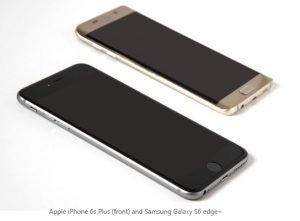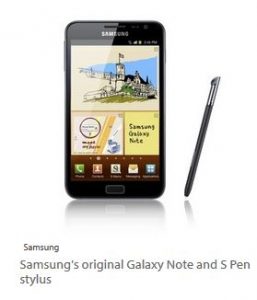
Early smartphones were tremendous, so producers mixed to therapist them. At that point came the phablet development. Later on, telephone size won’t be the center and the accentuation will move to interior changes and augmentations.
Amid the previous couple of years, top of the line cell phones have become logically bigger. In any case, that wasn’t generally the case.
In the beginning of cell phones, cell phones were at that point giant. “Brick” was frequently utilized while depicting the main BlackBerry telephones, and early Palm Treos were sufficiently profound to harm a toe in the event that you dropped one on your foot. In the mid-to-late 2000s, telephone makers concentrated on pressing increasingly highlights into littler, more slender and lighter handsets.

At that point, in the mid 2010s, telephone creators changed headings and bit by bit expanded the span of their telephones, for the most part to give more screen space. The first Samsung Galaxy Note, which was released in September 2011, exemplified this movement.
Today, almost five years after the Note discharge, slight is still a need, however couple of prevalent gadget creators produce telephones that are bigger or even much lighter than their past eras. The new thing is to incrementally diminish the general size of telephones, while keeping up or notwithstanding expanding show size.
So what’s next?
Too enormous, too little and simply right (for you)
Nobody size-fits-all methodology works for cell phones today, and that is something worth being thankful for; it implies more shopper decision. Indeed, even Apple — ruler of the “You’ll Want the Phone We Want You to Want and You’ll Like It” way to deal with item outline — now offers an assortment of shapes, sizes and hues for its once-static iPhone. What’s more, the organization’s late choice to discharge another, littler iPhone that resembles an old iPhone flipped the historical backdrop of telephone advancement back to front.
Talking, blunder, composing of Apple, the iPhone 6s Plus is presently at the tippity top of the substantial gadget range. At 192 grams, the iPhone 6s Plus is heavier than some other current-era telephone I’ve utilized. In examination, the Motorola DROID Turbo 2 with a gigantic 3,760mAh battery weighs 169 grams (12 percent not exactly the iPhone 6s Plus) and the Galaxy S7 edge with a 3,600mAh force pack weighs 157 grams (18 percent less). The 6s Plus is likewise fundamentally more (158.2 mm) than both the Turbo 2 (149.8 mm) and GS7 edge (150.9 mm), despite the fact that every one of the three telephones have comparable or indistinguishable showcase sizes. (I’d wagered anything that come next fall, Apple’s “iPhone 7 Plus” will be littler by and large and only a touch lighter than its stout more established brother.)
Special cases exist, obviously, and on the flip side of the array are gadgets, for example, Posh Mobile’s idiosyncratic new Micro SX240, which as the name infers, is ridiculously little. Truth be told, the Android telephone is the “business sector’s littlest cell phone gadget.” I don’t know whether it’s the littlest, however it beyond any doubt is one minor sprite of a telephone.
 Less concentrate on size with future telephones
Less concentrate on size with future telephones
Tricks like Posh’s SX240 aside, the prompt eventual fate of cell phones won’t look all that not the same as today’s telephones, at any rate from a size viewpoint. The showcases on phablets are sufficiently huge for the larger part of clients, and it’s impossible that telephones will get much more slender — in any event in the quick future — because of the need to incorporate expansion segments, for example, remote charging loops.
Gadget makers will dependably endeavor to make telephones lighter, however the huge test there is again the battery. Today’s telephones utilize more power than any time in recent memory, and they require more battery life. That implies bigger force packs and regularly more weight. The Samsung Galaxy S7 edge, for instance, is more humble by and large than the GS6 edge+, yet it weighs around 4 ounces more than its antecedent, due in no little part to the GS7 edge’s 20 percent bigger 3,600mAh battery.
Cell phone presentations will keep on getting higher determination and more shine upgrades, yet they won’t likely get much bigger than 5.5 inches or much littler than 4 inches. At the end of the day, the center will move far from size and toward different changes, for example, power-administration upgrades, quicker radios, enhanced cameras, port union and toughness.
For some time there, the proverb greater is better ran wild in the cell phone world. Prior to that, telephone producers simply needed to construct gadgets that didn’t oblige you to wear crazy holsters to bear them. Pushing ahead, the accentuation will be on inner parts, and however the shapes and sizes of tomorrow’s telephones may transform in tasteful ways, the most huge alterations will be in the engine. The times of pushing size limits, both vast and little, have gone the method for the Treo.
 Technowatchpk.com | Hub of Tutorials, Software Reviews, Mobilephone News
Technowatchpk.com | Hub of Tutorials, Software Reviews, Mobilephone News



